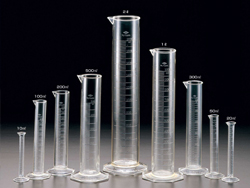Definition of desiccator drying agent
A desiccator drying agent is a substance that displays hygroscopic qualities, which basically means that it can induce or sustain a state of dryness in a moderately sealed container.In its most common form, a desiccator drying agent is a solid that works in either an absorbent or adsorbent capacity, although they may also combine the two functions. There are also drying agents that come in liquid or gaseous form, in which case they may work on different principles, such as the bonding of water molecules in a chemical process.
Purpose and use of desiccants
When used as a packaging aid, the primary purpose of a desiccator drying agent is to remove excess humidity that would otherwise have a detrimental effect on the quality of a particular product. This purpose is particularly suited for products that are especially sensitive the effects of moisture.Among the most commonly used desiccants commercially used today are:
- silica gel
- activated charcoal
- calcium sulfate
- calcium chloride
Important qualities of desiccants
When determining the feasibility of a particular desiccator drying agent for a specific application, certain qualities will have to be taken into consideration. Depending on these qualities, it may be determined whether or not a particular desiccator drying agent is suitable for a specific purpose. These qualities are:- toxicity
- chemical reactivity
- efficiency
With regard to toxicity, a particular desiccator drying agent may be chosen for its non-toxic quality. This is often the case when the drying agent is intended for use as a food packaging aid.
In some cases, a desiccator drying agent may be used precisely because it is toxic to bacteria, fungi, pest, or viruses. There are also applications wherein a drying agent that displays toxic qualities yet is safe for humans may be the most feasible solution. One drying agent that falls under this category is common table salt, which is often used as a drying agent in the dried food processing.
The humidity of the immediate vicinity wherein the desiccator drying agent is to be used should also be taken into consideration. Although the performance of desiccants with regard to dealing with moisture can usually be measured to a precise degree, the feasibility of a particular drying agent is often determined based on extensive testing and the results of practical use. Desiccants used in applications wherein humidity is a concern often include humidity indicators that change color according to the level of humidity in the package. These indicators will initially turn purple, and then pink with more extreme hydration.
Back to Top
Drying Agent

Drying Agent Resources
Sponsored Links
